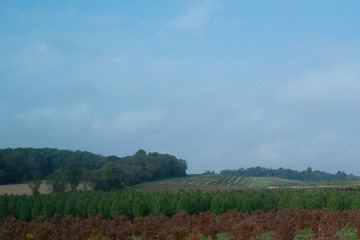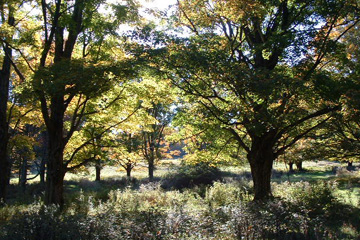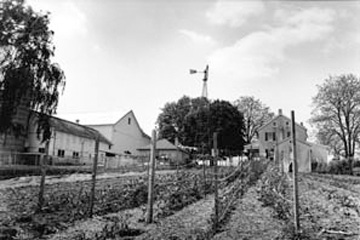“If you leave it to me, I will give it away. I will give it to no one; I will give it to everyone; I will give it back to God; I will make it a preserve.”
Kipp’s Fen is an Alberta Glacial-retreat remnant. It lies in an area of what was a glacial ice-flow river that created the ruggedly cut area of Sweet Valley, Pennsylvania. Everywhere in the countryside there are streams, creeks, brooks, and nooks. Springs bubble from the hillsides.
The fen itself is a two-acre basin composed of sedges (short grasses), formed into a dense thick mat up to six feet thick in places. The sedges were pollen-dated at the Dartmouth College Botany Lab to the time the Alberta Glacier retreated, 10,000 years ago. The Harvard University Botany Department estimated that some debit came all the way from Alberta, Canada. The six-foot thick mat of sedges grew there, slowly, as a wet meadow—but only in early fall. Each autumn the seasonal decrease in temperature cooled the glacier enough to slow the river to a stream, which was deeper in the earth than the basin. The temperature was just above freezing. Growing perhaps only an inch each brief season, it took much of the past 10,000 years for the mat to became six feet thick.
Within the deep mat of fen sedges have been found willow leaves and beaver cuttings, again, 10,000 years old and totally preserved.
In 1918, my grandfather John Kipp came to Sweet Valley where Hunlock Creek and Roaring Brook share their origins. Attracted by the isolated beauty, the wild soul of the land, where animals wandered commonly, he raised a family. My father Joseph Kipp was born on the land.
It was rugged then. Traveling was extremely difficult during the spring. “In the mid 1920s the skinny wheels and tires of the cars would sometimes disappear into a mud hole caused by a long-dormant spring and the car would abruptly come to a stop. Only a farm tractor could effect rescue and passage,” recalled our Aunt Mary Koval.
When my father married my mother, Margaret, she, too, fell in love with the land. She was the first, in the 1950s, to say, “Gerard, someday we need to preserve this beautiful canopy.” A-hundred-year-old black walnut tree in the yard became our sentinel symbol of preservation.
Throughout our lives, my father became a tireless supporter of the outdoors. He was a Scout Master, a Deputy Fish Warden, and a six-time world record holder in fresh water fishing. (His PA Fish Commission uniform hangs in Wisconsin’s Fresh Water Fishing Hall of Fame.)
In 1997, my father called me and said he had discovered on the land a rare flower, the Wood’s Lilly. Overnight the land took on new significance. My father asked me what I would do with the land if it were left to me, as everyone, including a growing number of outsiders, wanted to develop it. I said to my father, “If you leave it to me, I will give it away. I will give it to no one; I will give it to everyone; I will give it back to God; I will make it a preserve.” “Done,” he said, “do it.” And so we have.
It was not easy, finding the courage to “sign the line” on the easement papers, for it is a lasting signature. So I put a notebook in my pocket, gave it a name, “Kipp’s Fen,” and for several years wrote down everything that was to be considered for protection and future use. Family support from my cousin Dave Oplinger and his wife Janet, who live there, was invaluable. In 1999 they discovered another unusual flower, the Lady Slipper, a type of orchid. Within a few years, and with Dave and Janet’s help, the easement came into focus. In addition, when the deed was put in my name, I specified in my will that when I die the North Branch Land Trust is to assume ownership of the land, with endowment.
We completed the easement in 2003, with the stunning news that the biodiversity surveys completed by Rick Koval (not a relative) of the North Branch Land Trust and Wilkes University have identified nearly 1,000 species of flora and fauna on our 45 acres of land. The three descendant families of Kipp, Oplinger, and Koval all feel enormous pride in our accomplishment. A further dream is to preserve more of the 200-acre valley, for it teems with wildlife: flocks of wild turkeys, the return of a healthy bear population, and for the first time in 50 years, a bobcat. The flowers and fen are too rare to be lost to carelessness, and so we shall preserve them.
We seem to be dreamers and storytellers, those of us who donate conservation easements. To those who want to find the courage to “Sign the line,” I offer this simple advice: “Think of yourself as an artist of the land. Stay true to your colors and style, and the rest will fall into place.”




